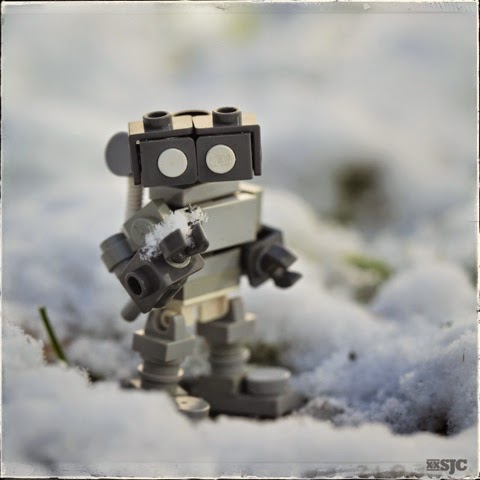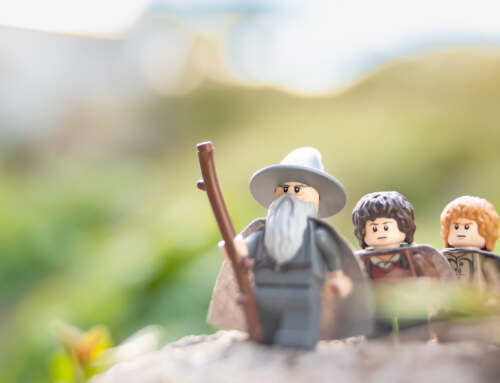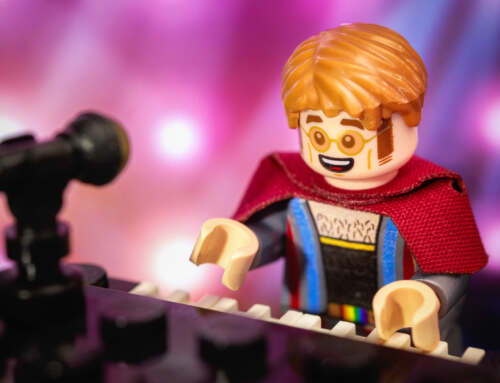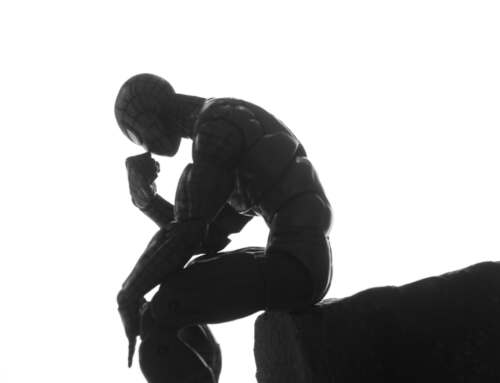So as you’ve surmised +Me2, Avanaut and I are excited about our upcoming #stuckinplastic exhibition. For a variety of reasons this is a big deal for each of us. Of course it is always risky when you put yourself forward artistically, and this situation is no different.
On IG the other day I came across a comment that touched a nerve:
“I feel like a jerk posting images of awesome things with the shiddyest (sic) camera. I love those high quality shots just as much as any other Lego fan. But at the end of the day, it’s just a bunch of minifigure pictures. I’m not trying to get the most expensive camera award.”
This comment comes from a person who identifies themselves as a “Master Builder” and while I don’t agree with their point of view, there is a kernel of truth in his statement. It directly addresses that little voice in the back of my head that holds all my doubts.
I know I will have to answer this question directly to the patrons of the Bryan Ohno Gallery and to any potential collectors. What makes this work worthy of purchase? Since the subject is a common household object, can’t anyone do this?
I’ll be very clear that I never set out to take the art world by storm and make “whimsical, powerful, iconoclastic and often unconventional art which speaks to, challenges, and provokes discussion about cultural, political, and social issues and the role art plays in our evolving global community.” (This is actual language taken from a gallery invite I received.) This is not me and it never has been.
What I do strive to create is art for Lego fans. I want to make art that any fan would be proud to display on their wall and so they can tastefully let their freak flag fly. I want to bridge the gap between the casual fan and those incredibly creative master builders. And if my images touch a deeper emotional truth along the way, then I couldn’t be happier.
What I do strive to create is art for Lego fans. I want to make art that any fan would be proud to display on their wall and so they can tastefully let their freak flag fly. I want to bridge the gap between the casual fan and those incredibly creative master builders. And if my images touch a deeper emotional truth along the way, then I couldn’t be happier.
I think the Lego universe is big enough for all of us to play in; each in their own way be true.
~ xxsjc
Does this fellow Instagram user have a point, is it just a mini figure picture?
If you don’t think it is just a pretty picture, how would you describe the photos taken by the members of #stuckinplastic?
If you missed out on signing up for the book exchange and would like to still participate, please contact us immediately.
Does this fellow Instagram user have a point, is it just a mini figure picture?
If you don’t think it is just a pretty picture, how would you describe the photos taken by the members of #stuckinplastic?
If you missed out on signing up for the book exchange and would like to still participate, please contact us immediately.
This little guy was created from Lego Space: Building the Future by Peter Reid. He has proven to be very popular.








These pictures on stuckinplastic and elsewhere represent so much more than just pretty pictures of minifigures. Though these shots are not of the figs I grew up with as a child they represent all the wonderful childhood memories I had with legos and the joyful experiences of sharing them with family. Legos brought out the best in my imagination as a kid, something I feel I have been slowly losing as I grow older and am desperate to hold onto. Lego photos are a way of slowly bringing that imagination back to life. Lastly, these wonderful shots bridge the gap between the present and the past, between older fans of lego and younger ones, no matter what type of camera is used.
Aye, I real feel connected here.
For me shooting stuck in plastic is indeed about bridging the past, present and future all in one. Especially the future as I believe it is a legacy for my grand children as well.
Just my 2bb on this 🙂
Me2
No, I wasn’t the person who made that comment, and calling myself a “master builder” on my blog was supposed to be irony because there are tons of MOC makers who are way better than I am. However, in thinking about what he said, I believe I’ve subscribed to that point of view, at least for my own work. (I still disagree with the part of his post that devalues the work that you do, because artists make art with all kinds of found materials, with all kinds of cultural connotations attached.) But when given the choice to invest in classes and better equipment or in something else (such as classes to boost my credentials as a professional translator), I chose the “something else.” I certainly appreciate what you all do–otherwise, I wouldn’t be a regular viewer, reader, and commenter–but my decline in posting frequency comes from a calculation of where my artistic energies are best spent, and I know that I will never get to the level as a photographer that I am as a writer.
Imagine us photographers embracing the writing skills.
I think my next post is going to be dedicated to you, Lyn.
In a special way 🙂
Me2
Looking forward to your next post!
The whole discussion about why do you photograph Legos/toys is crazy to me. I don’t see how it’s any different than photographing food or cars. The reason of why toys should not matter. If you see something as a photographer and you make an effort to shoot it if its interesting people will appreciate it. We don’t take photos of Lego figures trying to change the world or make a profit. We see something in our head we put it together and we shoot it. It’s no different than any other photo shoot. As long as you are having fun and doing what you love it should not matter what you photograph. It’s about what you see and what you want to share with other people some people will get others won’t. The camera you use doesn’t matter you could have the best camera in the world and if you don’t know how to use it your photos will suck. If you understand the basics you could use disposable camera and get spectacular results.
Andres, you hit a very good point there.
Should we actually talk about shooting plastic.
Is there any difference between the different artistic photography styles that are normally collected under the term fine art photography.
From Wikipedia:
Fine art photography is photography created in accordance with the vision of the artist as photographer. Fine art photography stands in contrast to representational photography, such as photojournalism, which provides a documentary visual account of specific subjects and events, literally re-presenting objective reality rather than the subjective intent of the photographer; and commercial photography, the primary focus of which is to advertise products or services.
(link: http://en.wikipedia.org/wiki/Fine-art_photography )
If we agree with the above we should indeed maybe just get over with and put toys on the same level as the Black and White Prints of Ansel and move on.
I fully agree with you that the tools of the trade dont really matter (that is why we usally dont talk shop here and have our mouth full about fx, aperture, ISO, …) and do want to discuss the why.
So, yes we have fun, we love what we do, but we also want to explore the boundaries of toy photography as a respective sub category of the fine art photography ranging landscapes, nudes, abstracts, concepts and toys alike.
Just my brick 🙂
Me2
I’m AKA @monagt5001